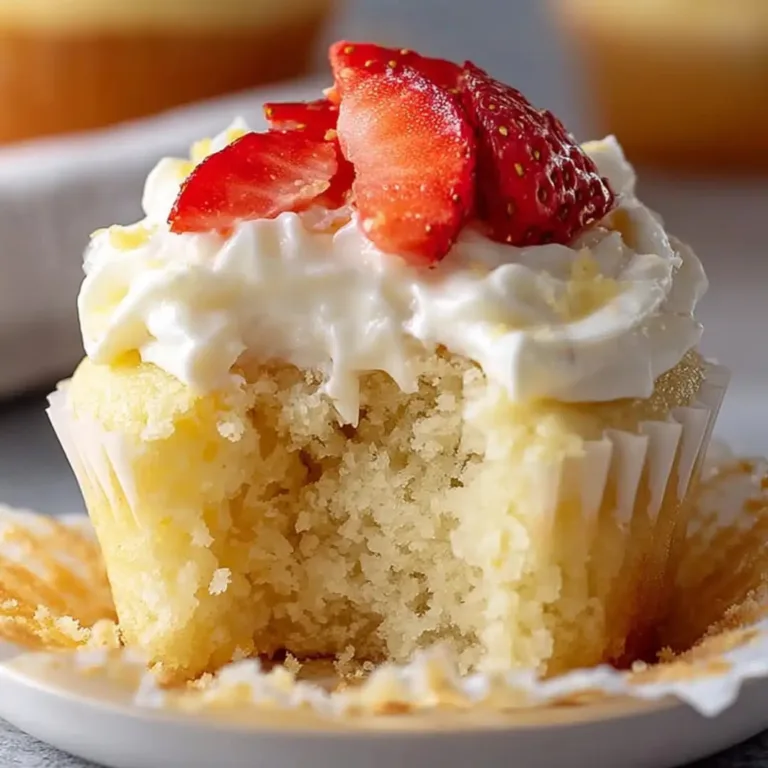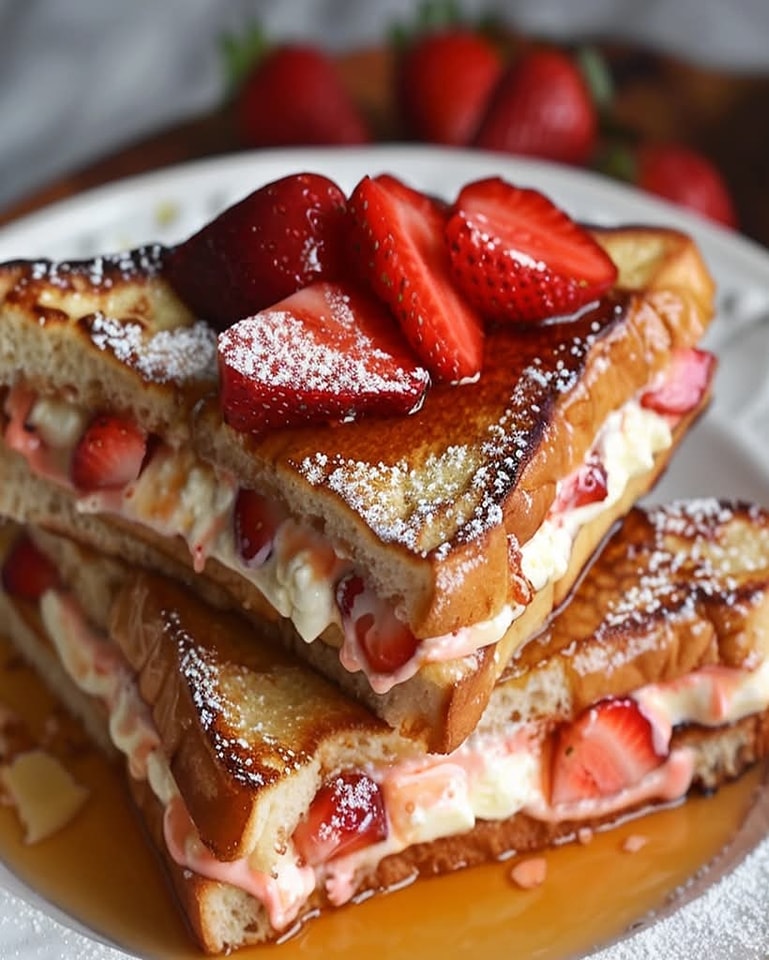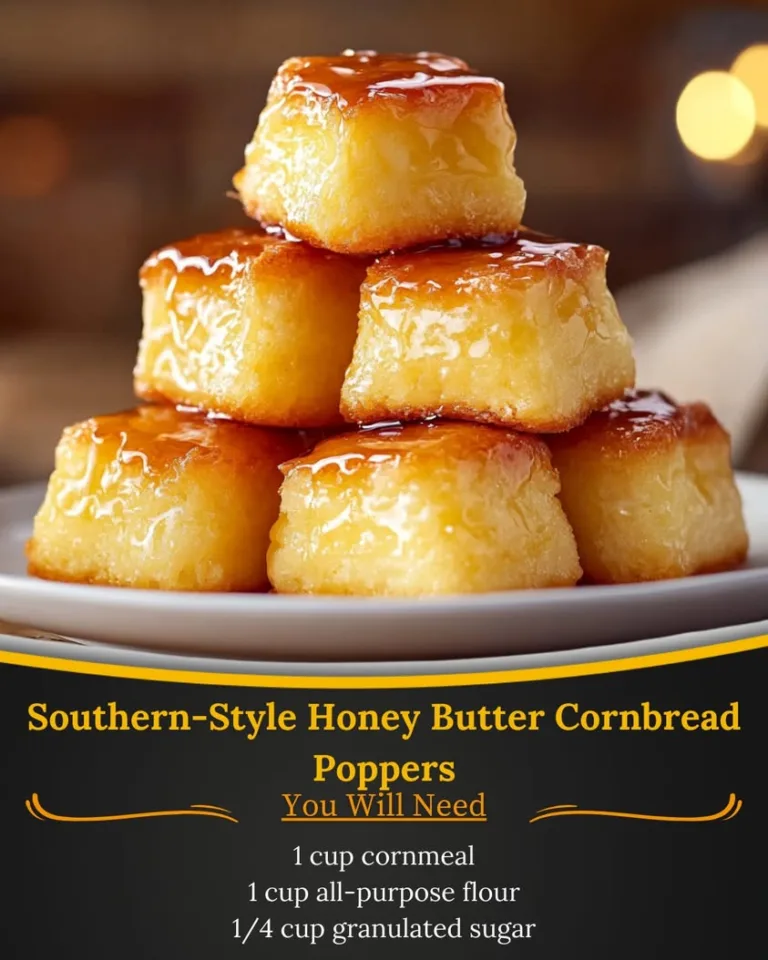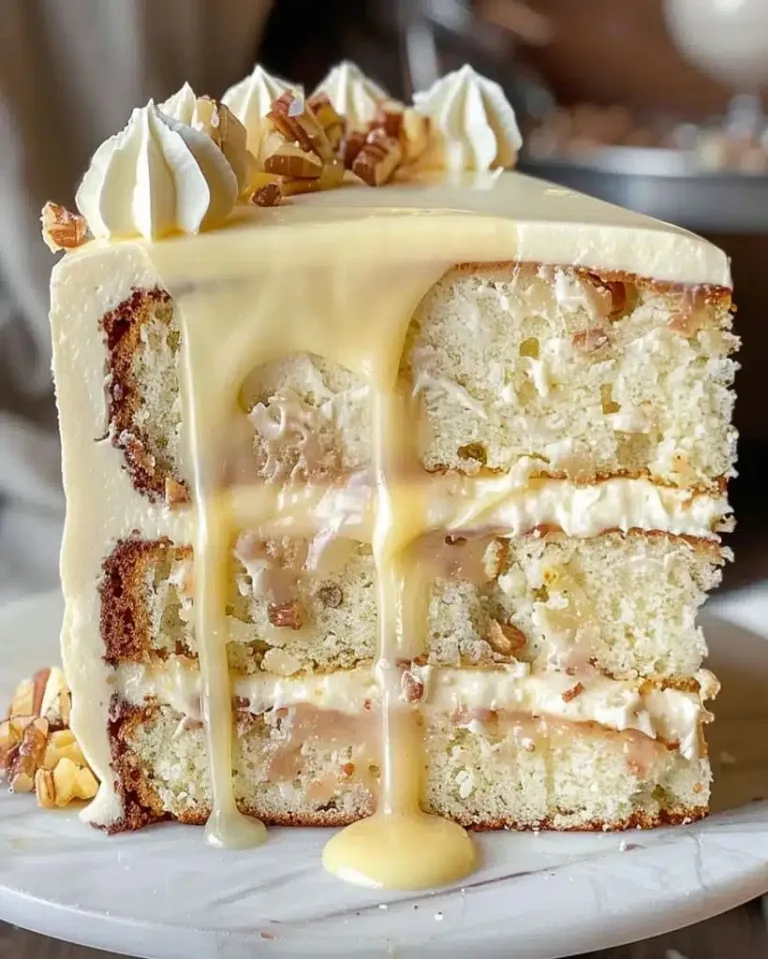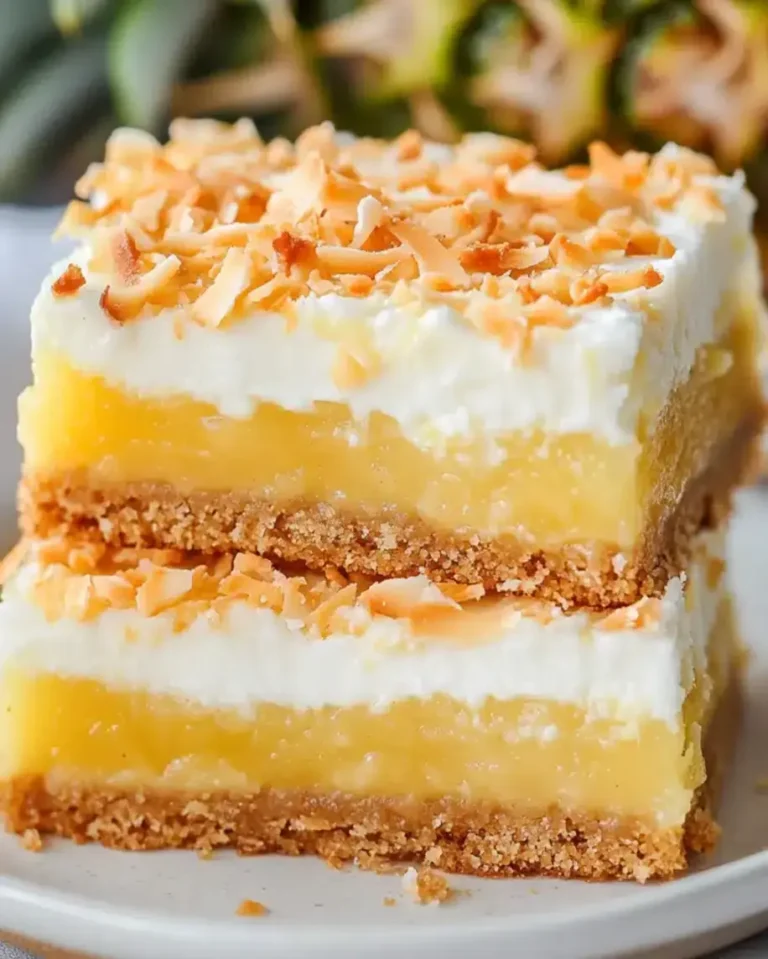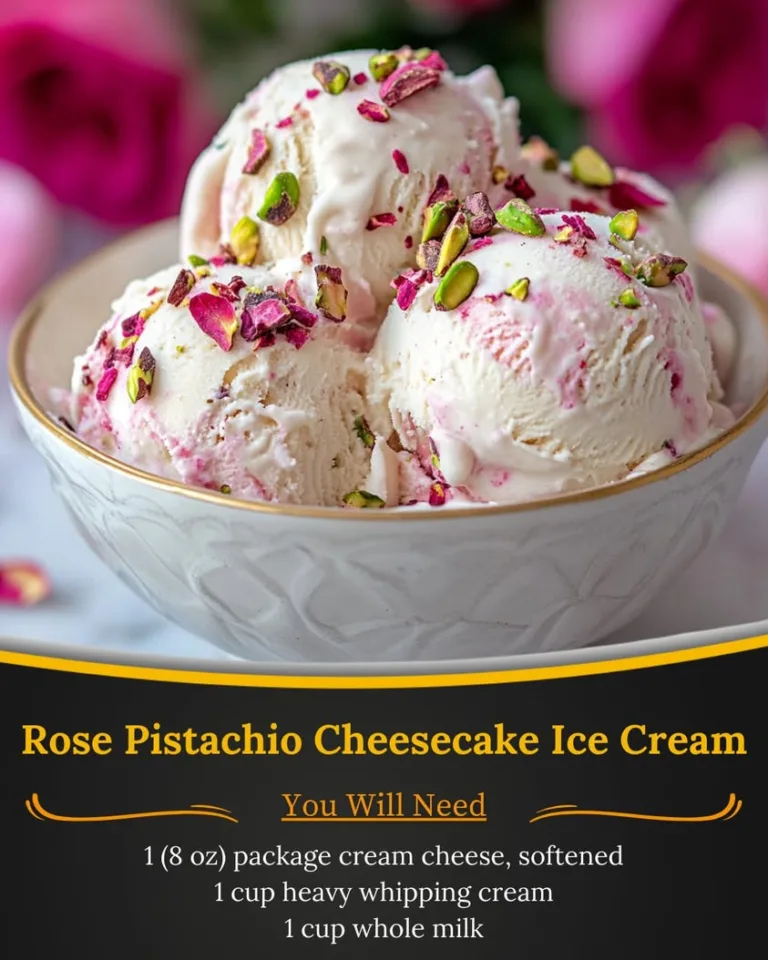Bake History with Jimmy Carter’s Grandmother’s Recipe Today

Jimmy Carter’s Grandmother’s Iconic Recipe: A Taste of History
This recipe is a true piece of history, straight from the kitchen of Jimmy Carter’s grandmother. The old-fashioned flavors are not just about baking; they represent a culinary legacy passed down through generations. The aroma of vanilla and freshly baked goods fills the room, inviting everyone to gather around the kitchen. Each bite is reminiscent of summers spent on the farm, making this recipe not only a treat but a journey back in time.
The compelling combination of ingredients in this recipe creates an unforgettable flavor profile. We’re talking about a comforting blend that’s simultaneously sweet and a little tangy, encased in a light, fluffy texture that melts in your mouth. The simplicity of the ingredients highlights their quality, allowing the natural flavors to shine. With each forkful, the nostalgia is palpable, making it a delightful experience that resonates well with anyone who values family traditions.
Quick Recipe Highlights
- Flavor Profile: This dish brings a warm balance of sweetness and slight tartness, perfect for bringing a smile to anyone’s face.
- Texture: Expect a fluffy, moist consistency that will leave you craving seconds, paired with a delightful crunch from the topping.
- Aroma: The aroma of fresh vanilla, warm spices, and melted butter wafts beautifully through your kitchen.
- Visual Appeal: Golden browns and creamy whites contrast elegantly, making it a standout on any dessert table.
- Skill Level Needed: This recipe is approachable for beginners yet rewarding for seasoned bakers.
- Special Equipment: You will need a standard round cake pan, mixing bowls, and a whisk.
Recipe Overview
- Difficulty Level: This recipe is rated medium due to the need for careful mixing and timing, but it’s straightforward enough for anyone eager to hone their baking skills.
- Category: Perfect as a dessert or sweet snack, this recipe fits well into afternoon teas or family gatherings.
- Cuisine: Rooted in Southern traditions, this recipe reflects the simplicity and rich flavors emblematic of the region.
- Cost: The ingredients are generally affordable, making this recipe accessible for all home cooks.
- Season: Ideal for year-round baking, but especially comforting during autumn and winter holidays.
- Occasion: Great for family get-togethers, casual gatherings, or even as a thoughtful gift for neighbors.
Why You’ll Love This Recipe
The taste and texture of this recipe are simply delectable and comforting. The cake features an exquisite blend of sweetness and a slight tang from the added fruits, providing a delightful taste. The fluffy cake texture harmonizes perfectly with the slightly crispy topping, making every bite a balance of heaven and nostalgia. Serve it warm for an extra treat, and watch your guests swoon with delight.
One of the benefits of this recipe is its convenience and straightforward preparation. With simple steps, even novice bakers will find it easy to whip up this classic. The minimal kitchen cleanup required afterward makes it even more appealing. Plus, it’s a great way to engage the family in a fun baking project, allowing everyone to create their own cherished memories around the kitchen counter.
Nutritionally, this recipe offers modest health benefits with the use of fresh ingredients. It includes fruits which provide vitamins and antioxidants, ensuring that your dessert is not just indulgent but a touch nourishing. Plus, you can customize it with more wholesome ingredients, making it suit various dietary preferences while maintaining the rich flavors.
This recipe shines in social settings, perfect for sharing with friends and family. It often leads to conversations about family heritage and culinary stories, making it more than just a dessert; it’s about connection. Guests will enjoy gathering, sharing stories, and relishing the shared experience that this delightful dish evokes.
Cost-effectiveness is yet another wonderful attribute of this recipe. With most ingredients easily found at home or local stores, you’ll be able to create a delicious dessert without breaking the bank. Furthermore, the recipe yields enough servings to share or enjoy leftovers, making it ideal for larger gatherings or meal prep.
Historical Background and Cultural Significance
This recipe has its roots in American history, especially tied to Southern traditions that emphasize hospitality and togetherness. Jimmy Carter’s grandmother would often prepare this dish during family gatherings, creating a sense of warmth and love that transcended generations. Each cook has added their own spin over the years, but the essence of the recipe remains unchanged.
Culturally significant to the South, this recipe encapsulates the simple joys of home-cooked meals. The Southern culinary tradition often revolves around family and community, with recipes like this one serving as a bridge from past to present. The story behind this dish reminds us of the importance of sharing meals and traditions with loved ones.
Over the years, this recipe has evolved, adapting to changing tastes and available ingredients while preserving its cherished core. The addition of local fruits or the use of contemporary techniques reflects modern cooking practices, yet it still holds tight to the past narrative carried forth by families like the Carters.
Regionally, adaptations have occurred with various home cooks putting their unique twist on the original recipe. Whether it’s incorporating seasonal fruits or experimenting with spices, these variations maintain the traditional flavors while keeping the dish fresh and exciting for today’s tables.
Ingredient Deep Dive
The star of this recipe is undoubtedly the fruit. Whether you choose apples, peaches, or berries, these ingredients add a vibrant flavor and color to your dish. Locally sourced fruits are not only fresher but also support local farmers, making them a wonderful sustainable choice. When selecting fruits, look for ones that are ripe and fragrant, ensuring maximum flavor.
Nutritionally, fruits are packed with vitamins and antioxidants. They’re a great source of dietary fiber and can help lower cholesterol, which adds a healthful benefit to your otherwise indulgent dessert. For best results, store your fruits in a cool, dry place away from sunlight and use them within a few days of purchase for peak freshness.
Next, let’s consider flour, a key ingredient that binds everything together. The choice of flour can affect the texture of your cake — opting for all-purpose flour will yield a hearty, fluffy result. When picking flour, make sure to choose high-quality brands for the best baking results. Additionally, keeping flour stored in an airtight container in a cool, dark place can extend its shelf life significantly.
Finally, let’s talk about sugar. It’s not just a sweetener; it also contributes to the cake’s structure and moisture content. While granulated sugar is a classic choice, you can experiment with brown sugar for a deeper flavor profile. Always choose unrefined or organic sugars when possible for a more wholesome approach, and store it in a tightly sealed container to prevent clumping.
Common Mistakes to Avoid
- Overmixing the batter can lead to a dense texture. Mix just until ingredients combine to keep the cake light and airy.
- Using cold ingredients can impact the rise and texture of your cake. Ensure that eggs and butter are at room temperature for optimal blending.
- Not preheating the oven can result in uneven baking. Always preheat your oven for consistent cooking times.
- Not measuring ingredients accurately can significantly alter the final product. Use measuring cups and kitchen scales for consistency.
- Allowing the cake to cool completely in the pan can cause it to stick. Transfer it to a wire rack after a few minutes.
- Ignoring the freshness of ingredients can lead to subpar flavors. Always use fresh produce and expired or stale baking products.
- Adding too much liquid can make the batter runny. Follow the recipe carefully to avoid altering the intended consistency.
- Not allowing the cake to rest can prevent the flavors from developing fully. Allow it to cool for at least 10-15 minutes before serving.
- Baking at the wrong temperature can affect how the cake rises. Use an oven thermometer to ensure accuracy for perfect results.
- Skipping the optional toppings can make the cake less appealing. Garnishing elevates the overall presentation and flavor experience.
Essential Techniques
Proper mixing techniques are crucial for the success of your cake. Mixing too vigorously can incorporate excess air, leading to a dense final product. To master this, gently fold the ingredients together until combined, using a spatula to create a lifting action. This ensures a light and fluffy cake.
Another key technique is baking. Understanding your oven settings, whether it’s conventional or convection, can make a significant difference. Convection ovens circulate hot air, cooking faster and promoting even browning. Keep an eye on the cake while it bakes to avoid overbaking, which can lead to dryness.
Also, consider the science of resting your baked goods. Allowing the cake to cool properly enables the flavors to mingle and the texture to stabilize. Ideally, let your cake sit for at least 10-15 minutes before cutting into it to ensure it retains its structure and flavor.
Pro Tips for Perfect Jimmy Carter’s Grandmother’s Recipe
– Use seasonal fruits for the best flavor and moisture levels. Fresh, ripe ingredients make the cake pop.
– Experiment with flavored extracts like almond or lemon for an extra twist on the classic taste.
– Incorporate spices such as cinnamon or nutmeg into the batter for warmth and depth.
– Prepare a crumble topping with oats and nuts for a crunchy texture that complements the softness of the cake.
– Always taste batter as you go; this gives you an idea of flavor balance and adjustments needed.
– If using frozen fruits, thaw and drain them well before adding to the batter to prevent excess moisture.
– Bake in a slightly lower temperature if using dark pans, as they absorb heat more quickly, potentially overbaking the cake.
– Consider glazing the cake with a light syrup for added sweetness and visual appeal.
Variations and Adaptations
Regional variations of this recipe allow for unique twists, such as adding pecans for a Southern crunch. Feel free to substitute traditional fruits with local ones, like huckleberries in the Pacific Northwest, or even tropical fruits in warmer regions. Seasonal adaptations using pumpkin or sweet potatoes during fall can create a wonderfully cozy dessert.
Dietary modifications are easy to incorporate as well. Swap regular flour for whole wheat or gluten-free flour blends to cater to different dietary needs. Additionally, you can substitute yogurt for butter for a healthier version that retains moisture while cutting saturated fat.
Flavor variations can include adding citrus zest or incorporating chocolate chips for a rich upgrade. These adjustments allow you to personalize the flavor profile to suit your own tastes while keeping in line with the original recipe’s spirit.
Presentation alternatives provide avenues for creativity; consider serving in individual glass jars or mini cakes for a modern twist at gatherings. Utilizing fresh herbs for garnish, like mint, enhances both the aesthetic and flavor experience.
Serving and Presentation Guide
Plating techniques can elevate your dessert. A simple slice on a contrasting plate can showcase the vibrant colors, while a dollop of whipped cream can add elegance. Garnishing with fresh fruits or edible flowers can also enhance visual appeal.
Traditional accompaniments such as vanilla ice cream or fresh whipped cream complement the warm cake beautifully. Offering options like coffee or sweet tea enhances the Southern-fried charm of the dessert experience.
Temperature is key; serve the cake slightly warm to maximize the flavors and aroma. If making ahead, slightly reheating in the oven before serving can revive its original texture and taste.
For portion control, consider serving smaller slices and providing accompanying sides to allow guests to sample without overindulging. This ensures everyone can enjoy the dessert while maintaining moderation.
Wine and Beverage Pairing
A light dessert wine, such as Moscato or a fruity Riesling, pairs beautifully with this cake, complementing its sweet notes while harmonizing with the fruit within. The wine’s slight acidity brings balance to the richness of the dessert.
For non-alcoholic alternatives, consider serving a refreshing iced tea or lemonade to cleanse the palate between bites. Herbal teas with soothing herbal notes can also provide a comforting experience alongside the warm cake.
If you’re a coffee enthusiast, pair it with a light roast coffee that won’t overpower the dish’s delicate flavors. The warmth of freshly brewed coffee enhances the cake’s inviting aroma, making for a delightful pairing experience.
Temperature considerations are key when serving; ensure your beverages are chilled or just brewed to best complement the cake’s temperature, maintaining a harmonious dining experience.
Storage and Shelf Life
For short-term storage, keep your cake covered at room temperature for up to three days. This will help maintain its moisture and flavor. If you need to store it longer, consider freezing.
When freezing, wrap the cake tightly in plastic wrap, then in aluminum foil. This double-wrapping prevents freezer burn and preserves flavors. The cake can last up to three months in the freezer.
Signs of spoilage include an off smell, discoloration, or signs of mold. Always inspect your cake before consumption if it has been stored for a while.
For reheating, always use the oven instead of the microwave to maintain its delightful texture. Preheat the oven to 350°F and warm for about 10-15 minutes until heated through.
Make Ahead Strategies
To streamline your preparation, consider measuring out dry ingredients a day in advance. Store them in airtight containers to keep them fresh until you are ready to bake.
When making the cake ahead of time, allow it to cool completely before wrapping it securely to maintain moisture. It can be assembled the day before serving, making it easy to serve when guests arrive.
If you are looking for quality impact, consider leaving off any toppings until the day of serving. This ensures that the cake remains fresh and visually appealing.
Consider preparing any sauces or toppings ahead of time. For instance, a fruit compote can be made days in advance and stored in the refrigerator until needed for serving.
Scaling Instructions
If you wish to halve the recipe, simply divide each ingredient by two and adjust the baking time slightly, checking for doneness earlier than usual. This is ideal for smaller gatherings or trying the recipe for the first time.
In contrast, doubling or tripling the recipe is fantastic for larger parties. Make sure to use larger mixing bowls and pans and adjust the cooking time as necessary—larger batches may take slightly longer to bake evenly.
Adjusting your equipment will be necessary when scaling. Ensure you have enough baking trays or pans, and consider baking in batches to maintain overall quality.
Timing modifications are crucial; keep an eye on the cakes and check with a toothpick for doneness as oven variables vary with different batch sizes.
Lastly, for storage considerations, ensure that you have adequate space in your pantry or refrigerator to accommodate larger quantities when making multiple batches of this recipe.
Nutritional Deep Dive
When it comes to the macro breakdown, this recipe generally features carbohydrates from the flour and sugars, proteins from eggs, and a modest amount of fats from added butter. Understanding these macronutrients can help you make adjustments to suit dietary needs.
On the micronutrient side, fruits offer a significant boost of vitamins such as C and A, while whole grain flours add beneficial B vitamins. This recipe can still be fulfilling while incorporating healthy elements, offering a guilt-free indulgence.
Health benefits include incorporating fiber from both the fruits and whole grains. This aids in digestion and can help maintain a healthy weight, making it a more health-conscious choice than pre-packaged desserts.
Dietary considerations can see this recipe adapted easily for various lifestyle choices; tweaking certain ingredients can cater to vegan, gluten-free, or lower-sugar diets without compromising taste.
Analysing portions can also provide guidance on serving sizes, linking back to balanced nutrition. Typical serving sizes keep indulgence in check while still enjoying this historical treat.
Dietary Adaptations
For gluten-free baking, substitute regular flour with a gluten-free blend. These blends often include starches that help mimic the texture of traditional baking without the gluten.
To make the recipe dairy-free, use plant-based butter and almond or oat milk. The flavors still hold up wonderfully, ensuring that everyone gets to enjoy this classic dish.
If you’re vegan, replace eggs with flaxseed meal combined with water for binding and moisture. Additionally, using applesauce can enhance sweetness while keeping the cake moist.
For lower-carb options, almond flour can replace traditional flour, making a satisfying alternative while reducing carbohydrates significantly.
Keto enthusiasts can swap out sugars for erythritol or stevia while ensuring to keep track of portion sizes, enabling a delightful dessert without high sugar content.
For those following paleo diets, replace white sugar with honey or coconut sugar, ensuring to source ingredients that are organic and minimally processed.
Low-FODMAP diets may require limiting certain fruits. Opt for seasonal, low-FODMAP options with the classic recipe to allow wider accessibility without discomfort.
Troubleshooting Guide
Texture issues can arise from overmixing the batter or using outdated ingredients. Always make sure to gently fold to preserve air and lightness while using fresh elements for best results.
Flavor balance can falter if salt or sugar levels aren’t well-measured. Taste as you mix, adjusting the seasoning for a balanced flavor profile that enhances the dish beautifully.
Temperature problems can lead to cakes that are underbaked or overcooked. Always check your oven’s accuracy and begin testing for doneness before the recommended time.
Common equipment challenges include working with certain mixers or ovens that may not solo produce consistent results. Familiarize yourself with your appliances to optimize your baking process.
Ingredient substitutions can sometimes drastically change the outcome of a recipe. Use reliable ratios and suggestions to ensure that substituted ingredients compliment and maintain the original flavor.
Timing concerns often come into play when managing larger batches. Be prepared to account for additional baking time while checking for doneness in multiple pans.
Recipe Success Stories
Feedback from the community highlights the nostalgic flavors and comfort this recipe brings; many reminisce about cooking with family and the bonding experiences it fosters. Testimonies showcase the importance of maintaining family traditions through cooking.
Successes also come from variations experienced by readers who adapted the recipe, some using unique fruit combinations or alternative flours, resulting in equally delightful versions without compromising the essence of the original.
Adaptation stories often resonate with the creativity of readers, who have taken to making this recipe their own, from added spices to shifting ingredients to more health-conscious options while preserving the heart of the dish.
Readers also emphasize the importance of photography when sharing their baked goods online, showcasing how beautifully this recipe can be plated. The vibrant colors and textures encourage others to experiment and share their beautiful presentations.
Lastly, suggestions from the community continually provide encouraging feedback for new bakers, emphasizing the approachable nature of this recipe, ensuring that everyone feels they can contribute to its legacy.
Frequently Asked Questions
Can I use frozen fruit in this recipe?
Yes, you can use frozen fruit! Just make sure they are thawed and drained to prevent excess moisture in the batter. Frozen fruits can add a nice twist and are often just as flavorful as fresh fruit.
What can I substitute for eggs in this recipe?
Flaxseed meal combined with water (1 tablespoon flaxseed meal + 2.5 tablespoons water) works well as an egg substitute. Mashed bananas or applesauce are also great options to provide moisture and binding.
How can I make this recipe gluten-free?
Simply substitute the all-purpose flour for a gluten-free blend that is meant for baking. Ensure to use a blend that contains xanthan gum for the best results in maintaining texture.
Is there a vegan version of this recipe?
Yes! Use plant-based butter instead of regular and replace eggs with flaxseed or applesauce to create a moist and delicious vegan cake.
How should I store the cake?
Store your baked cake in an airtight container at room temperature for up to three days. For longer storage, wrap it tightly and freeze for up to three months.
What’s the best way to reheat the cake?
Reheat the cake in a preheated oven at 350°F for about 10-15 minutes. This helps restore its texture and flavor, making it as delicious as the day it was baked.
Can I add nuts to the recipe?
Absolutely! Chopped nuts can be added into the batter for added crunch and flavor. Just be sure to adjust for possible allergies if sharing with others.
How can I enhance the flavor further?
Consider adding a splash of vanilla or almond extract to the batter or incorporating spices like cinnamon or nutmeg to enhance the depth of flavor.
What’s the ideal serving temperature for this cake?
Serving the cake warm brings out the best flavors. If refrigerated, you can warm it slightly in the oven before serving for a truly delightful experience.
Can I double this recipe?
Yes, you can double the recipe for larger gatherings. Adjust baking times accordingly, as larger quantities may require a bit longer to bake thoroughly.
What variations can I try with this recipe?
You can experiment with different fruits, spices, or toppings to tailor this recipe to your taste. Seasonal fruits or even adding chocolate chips can create a unique flavor.
Additional Resources
If you enjoyed this recipe, consider exploring other classic Southern dishes that celebrate rich family traditions. Techniques like creaming, folding, and batter aeration are essential in achieving great results, so check our technique guides for more information.
Find different ingredient information for seasonal fruits or alternative flours that suit your baking requirements. Staying informed about your ingredients will enhance your cooking experience and offer new opportunities in the kitchen.
Equipment recommendations can help streamline your cooking process. Look into investing in good-quality bakeware and measuring tools to ensure consistent results every time.
Lastly, seasonal variations can breathe freshness into this recipe. Try adjusting ingredients based on what’s ripe and available, allowing you to experience new flavors and textures throughout the year.
Join the Conversation
We love hearing from our community! Share your experience with this recipe on social media and post pictures of your final creation. Your photos can inspire others to try their hand at this piece of culinary history.
Engage with fellow bakers and drop in your personal tips and twists on the recipe. Each adaptation helps enrich our understanding and appreciation of this dish.
As you share your culinary journey, consider writing a review or providing feedback on how it turned out, as each story adds depth to this recipe’s legacy.
Exploring recipe variations by commenting on what you’ve tried will help others in their baking adventures. Join the dialogue to create a cooking community filled with exploration and inspiration.
Lastly, don’t forget to tag us in your posts — we can’t wait to see your delicious recreations of Jimmy Carter’s grandmother’s iconic recipe!
The Recipe
Jimmy Carter’s Grandmother’s Cake
Serves: 6 servings
Prep Time: 30 mins
Cook Time: 45 mins
Total Time: 1 hour 15 mins
Kitchen Equipment Needed
- Standard round cake pan
- Mixing bowls
- Whisk
- Measuring cups
- Spatula
Ingredients
- 2 cups all-purpose flour
- 1 cup granulated sugar
- 1/2 cup unsalted butter, softened
- 1 cup milk
- 3 eggs
- 2 tsp baking powder
- 1 tsp vanilla extract
- 1/2 tsp salt
- 1 cup chopped fruit of choice (e.g., apples, peaches, or berries)
Directions
- Preheat your oven to 350°F (175°C). Grease a round cake pan and set aside.
- In a mixing bowl, cream together the softened butter and sugar until light and fluffy.
- Add in the eggs, milk, and vanilla; beat well to incorporate everything.
- In another bowl, combine flour, baking powder, and salt. Gradually add the dry ingredients to the wet mixture, mixing gently.
- Fold in the chopped fruit, ensuring they are evenly distributed throughout the batter.
- Pour the batter into the prepared cake pan and smooth the top with a spatula.
- Bake for 45 minutes or until a toothpick inserted in the center comes out clean. Let cool for 10-15 minutes before transferring to a wire rack.
Recipe Notes
- Fresh, seasonal fruits are best for flavor and moisture.
- Store leftovers covered at room temperature for up to three days.
- Feel free to experiment with flavorings like almond extract for variety.

